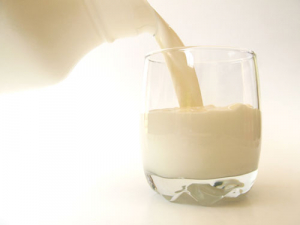Revamped Fonterra to be ‘more capital-efficient’
Fonterra chair Peter McBride says the divestment of Mainland Group is their last significant asset sale and signals the end of structural changes.
 The commission has released its final report on its review of Fonterra’s Milk Price Manual for 2016/17.
The commission has released its final report on its review of Fonterra’s Milk Price Manual for 2016/17.
The Commerce Commission has signalled it plans to look at details as to how Fonterra will include non GlobalDairyTrade sales in calculations for the milk price.
The commission has today released its final report on its annual statutory review of Fonterra’s Milk Price Manual for the 2016/17 dairy season.
The commission’s finding is that the manual is largely consistent with the purpose of the milk price monitoring regime under the Dairy Industry Restructuring Act 2001 (the Act).
Deputy chair Sue Begg says while much of the manual remains unchanged, the amendment to include sales for whole milk, skim milk and butter milk powders achieved outside the GlobalDairyTrade (GDT) auction platform will require additional analysis in the 2016/17 milk price calculation review.
“Although in principle we consider that including off-GDT prices is not inconsistent with the Act, we have concerns about the lack of detail as to how Fonterra will implement this change. We will take a closer look at this issue next year when we review Fonterra’s milk price calculation at the end of the current dairy season,” Begg says.
The final report recommends that Fonterra revisits its current treatment of lactose costs in the manual and considers including farmer support costs, though the commission’s view is both of these components are immaterial to the milk price calculation and do not significantly affect its findings under this review.
The final report also recommends Fonterra discloses the milk price paid on standard terms to increase clarity on how winter milk premiums and other adjustments are treated in the calculation.
“There are a number of issues we will be following up in our review of the base milk price calculation next year, including a focus on the cost of capital calculation Fonterra uses to set the capital charge,” Begg says.
The National Wild Goat Hunting Competition has removed 33,418 wild goats over the past three years.
New Zealand needs a new healthcare model to address rising rates of obesity in rural communities, with the current system leaving many patients unable to access effective treatment or long-term support, warn GPs.
Southland farmers are being urged to put safety first, following a spike in tip offs about risky handling of wind-damaged trees
Third-generation Ashburton dairy farmers TJ and Mark Stewart are no strangers to adapting and evolving.
When American retail giant Cosco came to audit Open Country Dairy’s new butter plant at the Waharoa site and give the green light to supply their American stores, they allowed themselves a week for the exercise.
Fonterra chair Peter McBride says the divestment of Mainland Group is their last significant asset sale and signals the end of structural changes.
President Donald Trump’s decision to impose tariffs on imports into the US is doing good things for global trade, according…
Seen a giant cheese roll rolling along Southland’s roads?